
Shownotes
After his dad bought a Piper Cherokee 140, it became a fun family airplane over a sea-level mild-temperature family course in Corvallis, Oregon. At eight years old, George Bye was inspired watching both his parents learn to fly and became fascinated by the jets and the trip to the moon in the 1960s. He says that shaped his life and brought him to where he is today with electric airplanes. George is the founder and CEO of Bye Aerospace. He gets more intimate with us as he discusses what foreshadowed his interest in aviation, getting into the United States Air Force, flying a variety of platforms, and coming into electric aviation with Bye Aerospace.
—
From Conventional To Electric Aviation with George Bye
I was inspired at eight years old watching both my parents learn to fly and then fascinated by the jets and the trip to the moon of the 1960s. That shaped my life and brought me to where I am today with electric airplanes.
—
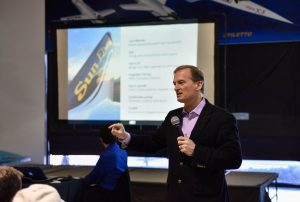 We’re incredibly fortunate. I have the pleasure of sitting across from George Bye of Bye Aerospace. He is the Founder and CEO and he’s bringing to market electric aviation. George, thanks for taking the time to visit.
We’re incredibly fortunate. I have the pleasure of sitting across from George Bye of Bye Aerospace. He is the Founder and CEO and he’s bringing to market electric aviation. George, thanks for taking the time to visit.
It’s sure a pleasure to be here.
Going into your comment and you said what influenced you early on. Let’s talk about the early years of inspiration when you were a kid and all of that and how it influenced you.
I would start with my mother, who is the daughter of a professor where I grew up in Corvallis in Oregon State University. She’s very creative and a great mom. She insisted that I enjoy and come to learn the arts. I played the violin starting when I was in third grade. I love sports. I played baseball. My dad and I played catch. I enjoyed very much the life of a kid growing up and all things Boy Scouts and all of that. My mom also infused in me the appreciation of the arts. She insisted that I learn to draw and paint. Of course, she herself is a professional painter. She gave me a painting and I’m deeply honored by that gift. I loved the sciences. My dad’s an engineer and that was a great influence for me. The creative side, the artistic side, the combination of both sides of the brain was brought and a part of my DNA as a young lad. I mentioned I love flying and from the get-go, I dreamed of being a jet pilot and an astronaut. All of the excitement in the 1960s about going to the moon, all of that was captured as a young person but colored very much by a mother and a father who helped shape but also allow all that creativity, science, engineering, sports to be combined together with the arts, creativity, dreaming and imagining.
I think you and I talked previously and said your mom got her private pilot’s license at first?
 Back in those days, that was something. In the early to mid-1960s, women did not fly. Getting a private license first inspired the family and me as an eight-year-old in those days. Dad is next. They both became private pilots. We bought a Piper Cherokee 140, believe it or not. As a family in Corvallis, Oregon with sea level mild temperatures, that was a fun family airplane. There were two of us boys at that time. My sister came a little bit later, but we love flying and that captured me. I was hooked. I set the path for my life at that moment going forward.
Back in those days, that was something. In the early to mid-1960s, women did not fly. Getting a private license first inspired the family and me as an eight-year-old in those days. Dad is next. They both became private pilots. We bought a Piper Cherokee 140, believe it or not. As a family in Corvallis, Oregon with sea level mild temperatures, that was a fun family airplane. There were two of us boys at that time. My sister came a little bit later, but we love flying and that captured me. I was hooked. I set the path for my life at that moment going forward.
Do you remember the first time your mom gave you tutorial?
I do and it was an amazing feeling. You think two dimensionally.
How old were you when you did that?
That was all between eight, nine, ten until sixth grade, twelve years old. All of those early experiences of flying, you go from a very two-dimensional experience in life to flying as three dimensional. Going left, going right, going faster, going slower was something that was pretty easy to capture but going up and down that was like, “This is different. This is a roller coaster.” It was great fun.
I think about the perspective that changes when you’re at altitude versus the perspective you have as a kid on the ground and the influences for your mom. Your mom and dad flew, did your brother have the same joy of flying that you had?
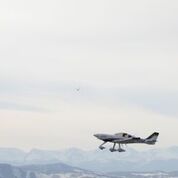 He did and he got his private licensed later in life as well. Unlike me, I went into the Air Force, pilot, flying and so forth. My brother, David, went into the Navy. He took a different track. He still enjoyed aviation or flying as we did as a family but as a private pilot.
He did and he got his private licensed later in life as well. Unlike me, I went into the Air Force, pilot, flying and so forth. My brother, David, went into the Navy. He took a different track. He still enjoyed aviation or flying as we did as a family but as a private pilot.
As a kid, and we all had very favorite things that we played with, was there something that you played with that foreshadowed your interest in aviation?
I remember at Christmas time, Legos were popular back then as they are now. Perhaps a resurgence in interest in Legos. I remember getting Legos. Some kids would make trucks and a house but I made an airplane. I took the wheels that were meant for a vehicle, took off the rubber and I made a little thing so that I could take some strength from the top of the stairs, ran it across over the living room, down to the fireplace mantel, tie it off and then I could fly my airplane down the string to land on the fireplace mantel. It was my first airplane design and tried it out.
Going from the single digit years that you go through, were you pretty much in the same area of the country as you grew up?
We grew up in the Northwest or Oregon and Washington State.
You went through the elementary school, high school and all that stuff and played sports. At some point, you went to university. Did you start ROTC when you first got there or was that something that came to you later?
At the time, I wanted to go back to Oregon State where dad was an alum. My father got his engineering degree at Oregon State. My grandfather was a professor at Oregon State on loan from UCLA. I was thinking, “That’s where I want to be. That’s where I want to go and do engineering like my father.” Having moved to Washington State across the river in Vancouver, across from Portland, there’s a language requirements issue. I ended up looking at the University of Washington after going to a community college there in Vancouver for the first year. I applied for ROTC in a ROTC pilot scholarship.
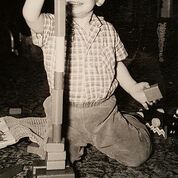 What year was this?
What year was this?
This is going back to 1975 and 1976.
Post-Vietnam.
After the Vietnam War, there was a tremendous draw down of the military. While I was fascinated with flying, the military was not interested in new pilots at that point. It’s very scarce in terms of pilot slot availability and then getting any scholarship for that was very remote. When I first made my application, they said, “George, this is great. It’s wonderful. I love your grades, your sports and Boy Scouts but we don’t have a slot for you. We can make you an alternate. Wouldn’t you like to be an engineer?” I said, “Thank you so much, but I want to be a pilot. I am going to stay on focus here. I’m here to be a pilot.” Back and forth, patience and over some time, six months later I got another letter in the mail that said, “George Bye, welcome to the United States Air Force. We have an ROTC pilot scholarship for you.” With great anticipation, I began my next step in life.
It came in snail mail. Do you remember when you read that?
There are moments where you can go one direction or another.
Yes, that was a huge day. There are pivot points in our life. There are moments where you can go one direction or another. That was one of those big moments in my life that shaped the next fifteen years.
The funny part about that is I got an army flight scholarship as well. When I was in, it seemed to be easy. I don’t know whether it was because I went to Tennessee and nobody flew but nonetheless. Do you remember the first day that you walked down to meet your flight instructor?
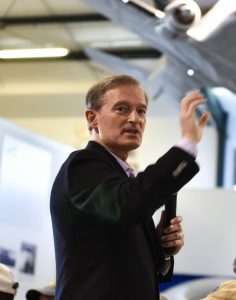 In the Air Force ROTC, you had a flight screening program. You had freshmen, sophomore and then before your junior year, there was a flight screening program, 25 flight training hours. The idea was basic airmanship skills. We’d already taken the AFOQT test, which was an aptitude test to even become or be considered to be a pilot. You had to maintain grades in the sciences and engineering, all of which were gatekeepers to a very high criteria and a very small requirement for the number of pilots at that point in our country’s history. The flight screening program was what I would call a high pucker factor. They’re not there to help you. They’re not there to give you your private license. They are there to screen you from becoming a pilot or somebody that may not have the aptitude that they were hoping for.
In the Air Force ROTC, you had a flight screening program. You had freshmen, sophomore and then before your junior year, there was a flight screening program, 25 flight training hours. The idea was basic airmanship skills. We’d already taken the AFOQT test, which was an aptitude test to even become or be considered to be a pilot. You had to maintain grades in the sciences and engineering, all of which were gatekeepers to a very high criteria and a very small requirement for the number of pilots at that point in our country’s history. The flight screening program was what I would call a high pucker factor. They’re not there to help you. They’re not there to give you your private license. They are there to screen you from becoming a pilot or somebody that may not have the aptitude that they were hoping for.
A fair amount of stress and a fair amount of focus. The civilian contractor was a very nice guy, but he had a job to do. It wasn’t like he put his arm around me and said, “We’ll slog on through this.” It was, “Here’s the deal, here’s your syllabus. There’s the airplane. Let’s get this done.” The initial training was fairly straightforward dual training but I remember vividly taxing down after what I thought was a training flight. He said, “Stop the aircraft right here.” It was next to a parking area and I was a little bit surprised. He looked over at me and he goes, “You’re a plane and got out.” My first solo, every pilot remembers his first solo. I was, “It’s on me. There’s nobody here to help out.” At that moment, you have a reckoning.
Do you remember what your downwind was like?
I do. I remember that first turn to final, everything.
I did the same thing in Murfreesboro, Tennessee and I can see it like it’s yesterday. You’re going downwind and turn base, then you go fly and you go, “I’ve got to remember all this stuff.” Then you start getting close to the runway and you go, “This is the moment.”
I’ve done it a million times since then and I can’t remember any of them but that first one, you always remember it. The first solo in the Air Force later, T-37 and the T-38 and on through my career, those moments capture you. Emergencies get your attention and are embedded in your memory and shape you. The judgments and the training, all of that is a part of your life all come together in those moments.
Do you remember where your first cross-country flight went to?
 We did the cross-country flights but to your point, it’s getting out of familiar. The familiar area and going to somewhere novel new.
We did the cross-country flights but to your point, it’s getting out of familiar. The familiar area and going to somewhere novel new.
The thing that struck me about all of that as you’d have to plan and execute your plan and then you’d have to be able to follow the plan that you set up. You have to be able to go on, get signed off and come back and you go, “I didn’t kill myself along the way so that’s plus.” Then you think if you’re up there if I have a mechanical, “Where am I going to go?” I think all of those things come forward as we’re in your office with all the whiteboards, all the notes and all the effort here to bring this technology forward. I’m interested in the formative transition. You’ve finished flight program and you’re finishing ROTC.
I worked hard. I loved the Air Force. I loved even ROTC, the college days. I rose up through the ROTC ranks. I finished my senior year as a cadet colonel and the wing commander for the organization there at University of Washington, which was a real honor and responsibility. There are two wing commanders that school year split into two. It was quite an honor for the two of us. The two of us were distinguished graduates, which launched me into getting my second lieutenant and then onto pilot training. I was able to pick where I would go to pilot training. In those days, Williams Air Force base was the premium location in Phoenix, Arizona. That accelerated me in that next step of my life going from engineering school to becoming a commissioned officer. More importantly, that step into undergraduate pilot training for the air force.
You arrived in Phoenix and you’re getting ready to do your training. When you look at the advantages to having a degree in engineering versus not having, how did that affect your behavior at flight school?
It helped in terms of understanding the airplane that I was flying in particular the aerodynamics of the airplane. It set expectations as I maneuvered the plane and went through the flight envelope of the airplane. What the Air Force was looking at was a method to screen the aptitude both physically, dimensionally. The Air Force pilot aptitude requirements as well as the science and engineering mental aptitude of its pilot candidates. By using these sciences, that brought together those two features and its pilots going through training in those days like myself.
You flew a variety of platforms. What was the first jet that you flew?
I started with the Cessna T-37, twin jet primary Air Force trainer subsonic. It basically had the same performance of the classic P-51 from the World War II era. It was 300 not airplane, a little bit more but it would do all of the loops, barrel rolls and formation flying. Instruments, the traffic pattern work and all of the basic fundamentals of going from a private general aviation pilot into the introductory experience sensations and environment. The parachute and the helmet and the oxygen and all the rigors of that initial screening, the primary phase of flight training. It was meant to be tough. As few pilots as they were even bringing to undergraduate pilot training, they wanted even fewer to graduate. The attitude was not, “We’re here to train you.” The attitude was, “We’re here to screen you and reduce this class size because we have very few pilot requirements.” This is the late ‘70s, early ‘80s timeframe.
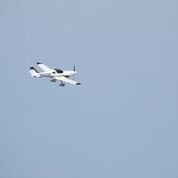 As many of us remember those days, the military was being trimmed way back Jimmy Carter days, pre-Reagan. There were very few resources and very few pilots. The few that were getting through had a few slots available. T-37 screening, I did very well. I was fortunate and worked hard. I went into T-38s, going from subsonic to supersonic. It was awesome. I loved it. I consumed this experience and again, I was very fortunate. I did very well and was able to graduate as a distinguished graduate in the top 10%. I went on into my Air Force career as a pilot with my wings and eventually able to use those skills to train others. I went to several of the various operations, wars and things that happened in the late 1980s and early 1990s.
As many of us remember those days, the military was being trimmed way back Jimmy Carter days, pre-Reagan. There were very few resources and very few pilots. The few that were getting through had a few slots available. T-37 screening, I did very well. I was fortunate and worked hard. I went into T-38s, going from subsonic to supersonic. It was awesome. I loved it. I consumed this experience and again, I was very fortunate. I did very well and was able to graduate as a distinguished graduate in the top 10%. I went on into my Air Force career as a pilot with my wings and eventually able to use those skills to train others. I went to several of the various operations, wars and things that happened in the late 1980s and early 1990s.
We were talking to this a little bit before as an instructor pilot. You’ve got your skill sets that you’ve learned, broadened and honed and then you start bringing in the students. What I was interested in is how much of the lessons on the airframe you brought forward, to what you’re doing at Bye Aerospace from watching what it did do and watching mistakes from the student pilots and so on.
I look back and look forward, the experience, the technical piece, the airmanship, the judgment required as an Air Force pilot, particularly in my Euro-Nato Joint Jet Pilot Training days. Flying the T-38 as an instructor training new NATO fighter pilots or student pilots who were to become fighter pilots was a combination of undergraduate pilot training and introduction to fighter fundamentals. UPT and IFF are very unique fighter program. Again, starting in 1983 to 1988, I was there training these students from NATO. At the end, I was a pilot instructor trainer. In other words, I trained the new instructors. As a part of that, there’s a tenacity and grit. The ability to manage stress that is simply a requirement in the three-dimensional chess game of being a fighter pilot. You’ve got the physical experience. You have to manage your aircraft and a threat that would very much like to kill you.
It’s a serious game. It absolutely captures everything, all of your entire capabilities, physical and mental is finely tuned in this. The key thing is you’ve got to know your limitations. You go right up to the edge but not beyond. Understanding yourself and the other people that you’re working with on your side as well as your enemy, is the part of what I carry forward as an entrepreneur, as a business person. In a cutting-edge development of a new technology and a new company both again, working with our team and the expectations of the team as well as understanding the potential threat, the competition, if you will that’s out there or we’ll be out there. It’s very much a life experience for me from my military days that shaped and formed who I am now with business.
As you look back over all of your military flight experience, my father was a fighter pilot and so there are stories. Is there a favorite story or memory that you have as a pilot in the Air Force?
There were many of the operations that I went to and by that, I mean wars. There were skirmishes, El Salvador and Peru where there was a context of combatants. There was Panama, which was a relatively short engagement. The regime change that was underway there. Then Desert Shield and Desert Storm, which was a full-on battle to end all battles. At the time, the front page of the major magazines, Time magazine and etc. It was the crescendo of the Reagan era leading into what’s dominating our worldview. What we allow with this worldview with the Berlin Wall coming down but still these large reminisce of the Cold War. Saddam Hussein controlling the vast amounts of oil as well as the Kuwait invasion and so forth.
That was the backdrop of going on a mission with my crew in the C-141. I remember vividly, very late at night flying in with a load of bombs, rockets and bullets in the C-141. C-141 is a four-engine transport built by Lockheed Martin. It’s a marvelous airplane about the same size as a Boeing 707. If you can picture a 707 maybe only it was a high wing cargo plane by Lockheed Martin. It did a marvelous job transporting troops and cargo into the various areas that we had to resupply. In those days, making preparation and ultimately the engagement of the war. I flew in there one...
